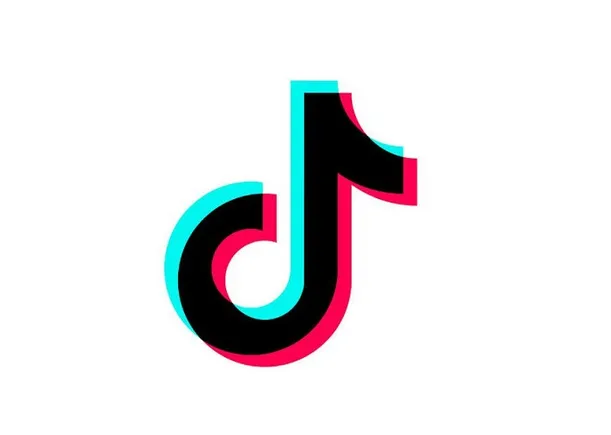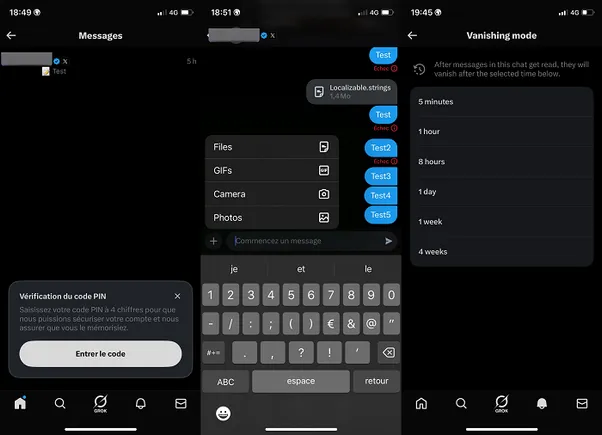How to reduce marketing tool sprawl without losing the functionality you need
Marketing teams today are drowning in software. The 2024 Marketing Technology Landscape revealed a staggering 14,106 martech products available, representing 27.8% growth year-over-year. But here's the uncomfortable truth: marketers estimate they waste an average of 26% of their budgets...

Marketing teams today are drowning in software. The 2024 Marketing Technology Landscape revealed a staggering 14,106 martech products available, representing 27.8% growth year-over-year. But here's the uncomfortable truth: marketers estimate they waste an average of 26% of their budgets on ineffective channels and strategies, with about half of respondents saying they misspend at least 20% of their budgets. Businesses using 15+ marketing apps can consolidate to a unified platform without losing functionality while reducing costs and improving team efficiency. This isn‘t about sacrificing capability — it’s about strategic consolidation that maintains 95% of your functionality while dramatically cutting waste. And the problem isn't just financial. Gartner reports that average marketing budgets dropped from 9.1% of company revenue in 2023 to 7.7% in 2024, putting enormous pressure on teams to do more with less. Meanwhile, your marketing stack has become a Frankenstein monster of disconnected tools that creates more problems than it solves. Table of Contents Marketing teams accumulate tools for legitimate reasons. Each platform promised to solve a specific problem, and individual team members developed expertise in their preferred tools. But this organic growth creates three critical issues: According to research by Proxima, up to 60% of marketing budgets are wasted due to inefficiencies in execution and planning. The waste isn‘t just monetary, it’s operational, strategic, and psychological. Before diving into consolidation, let's identify the typical culprits. Most mid-sized marketing teams use variations of these 15+ tools. 1. Graphic design and visual content 2. Professional design and video editing suites 3. Video recording and screen sharing 4. Writing assistance and proofreading 5. Social media scheduling and management suites 6. Social media publishing and analytics systems 7. Social listening and engagement monitoring tools 8. Email marketing campaign management tools 9. Email automation and CRM tools 10. Creator-focused email marketing tools 11. Website traffic analysis tools 12. SEO and competitive research tools 13. Backlink analysis and keyword research tools 14. Customer relationship management 15. Sales pipeline management 16. Meeting scheduling calendar tools 17. Internal team communication channels 18. Project management platforms Time to complete: 1-2 weeks Expected savings: Immediate visibility into $10,000-50,000 annual waste Start with a complete inventory of every marketing tool your organization pays for. A recent Slack/Salesforce survey found the average small business owner juggles four different digital tools daily, and this contributes to inefficiency—29% end up repeating messages across platforms and 30% spend time searching across multiple systems. Action steps: Red flags to watch for: Time to complete: 1 week Expected savings: Clear picture of feature redundancy worth $5,000-20,000 annually Create a comprehensive map of what each tool actually does versus what you thought it did when you bought it. Most teams discover they‘re using 30% or less of their software’s capabilities. Critical questions: Time to complete: 2 weeks ongoing Expected savings: Avoiding failed implementations worth $25,000+ in wasted time Why teams resist consolidation goes beyond simple preference. Understanding these psychological barriers is crucial for successful consolidation: Change management strategy: Time to complete: 2-3 weeks Expected savings: Avoiding wrong platform choice worth $50,000+ in migration costs When consolidation isn't the answer: If your team requires highly specialized tools for technical SEO, advanced video editing, or industry-specific compliance, partial consolidation may be more appropriate than full unification. Platform evaluation criteria: Real-world success example: Liquidity Services consolidated eight different software tools onto HubSpot and reduced their overall costs by 50%. The key was choosing a platform that could handle their complex, multi-marketplace sales and marketing operations without losing the specialized features each team needed. Time to complete: 3-4 weeks Expected savings: Avoiding data loss and rebuild costs worth $30,000+ How to handle data migration between tools requires meticulous planning. Most failed consolidations happen because teams underestimate data complexity. Migration best practices: Data migration priorities: Time to complete: 2-3 weeks Expected savings: Eliminating manual processes worth 10-15 hours weekly per team member Don't just recreate old workflows, optimize them. Consolidation offers the opportunity to eliminate inefficiencies that existed because of tool limitations. Workflow optimization opportunities: Time to complete: 4 weeks ongoing Expected savings: Avoiding productivity loss worth $20,000+ in delayed adoption Discovering hidden features that reduce redundancy often happens during training. Most platforms have capabilities that eliminate the need for specialized tools, but teams never discover them without proper onboarding. Training strategy: Time to complete: 1-2 weeks Expected savings: Preventing integration failures worth $15,000+ in lost productivity What's the migration sequence for minimal disruption? Run parallel systems for 2-4 weeks while testing all integrations and workflows. This ensures you can revert quickly if critical issues arise. Testing checklist: Time to complete: Ongoing monthly reviews Expected savings: Continuous optimization worth $5,000+ annually in improved efficiency What functionality might I actually lose? Most teams discover they lose 5-10% of highly specialized features but gain 40-60% improvement in overall efficiency and data accessibility. Performance metrics to track: Time to complete: 1-2 weeks Expected savings: Immediate cost reduction of $30,000-100,000 annually Successful consolidation example: Pleo consolidated four external tools onto HubSpot, saving over $350,000 each year. Their success came from focusing on workflow simplification rather than feature maximization. Retirement strategy: When we say you can maintain 95% functionality, here's what that looks like in practice. Function Before (Multiple Tools) After (Unified Platform) Functionality Retained Email Marketing Mailchimp + ConvertKit HubSpot Marketing Hub 95% Social Media Buffer + Hootsuite + Sprout HubSpot + Native Integrations 90% CRM & Sales Salesforce + Pipedrive HubSpot CRM 95% Analytics Google Analytics + SEMrush HubSpot + GA4 Integration 85% Content Creation Canva + Adobe CC Canva + HubSpot Templates 90% Project Management Asana + Slack HubSpot Tasks + Slack 80% Total Annual Cost $84,000 $42,000 50% Savings Current State (15+ Tools) Consolidated State (Unified Platform) 47 potential integration points 8 strategic integrations 12 hours monthly troubleshooting 2 hours monthly maintenance 15 separate user accounts Single SSO across all functions Manual data exports weekly Automated reporting daily 6 different support contacts Single vendor relationship Year Current Tool Costs Consolidated Costs Annual Savings Efficiency Gains Year 1 $90,000 $45,000 $45,000 20 hours/week Year 2 $95,000 $47,000 $48,000 25 hours/week Year 3 $100,000 $49,000 $51,000 30 hours/week Total $285,000 $141,000 $144,000 1,950 hours Focus consolidation efforts where you'll see the biggest impact. Typically, 80% of your marketing inefficiencies come from 20% of your tool sprawl. Target these high-impact areas first: Some organizations benefit from partial consolidation — maintaining specialized tools for specific functions while unifying the core marketing operations stack. Keep separate when: Consolidate when: Run old and new systems simultaneously for 30-60 days to ensure no critical functionality is lost. This approach costs more short term but prevents costly mistakes and can be done with the following five criteria. When consolidation means losing specific features, develop workarounds before retiring old tools: Immediate savings: Example calculation: Productivity improvements: Strategic benefits: The problem: Teams assume data migration will be straightforward, then discover incompatible formats, missing fields, or broken relationships. The solution: Conduct thorough data audit before selecting new platform. Test migration with sample data sets. Budget 40% more time than initially estimated for data cleanup and mapping. The problem: Selecting a unified platform because it has the most features, without considering how your team actually works. The solution: Map current workflows first, then evaluate platforms based on workflow optimization potential, not feature checklists. The problem: Only 25% of small and medium enterprises have clearly defined marketing performance measures, making it difficult to prove consolidation success and maintain team buy-in. The solution: Establish baseline metrics before consolidation begins. Create clear success criteria and communicate progress regularly to all stakeholders. Marketing tool consolidation isn‘t about using fewer tools for the sake of minimalism; it’s about creating a more efficient, effective marketing operation that delivers better results with less waste. Start by auditing your current tool spend and usage rates, focusing on workflows and data flow rather than feature comparisons. The best unified platform is the one that optimizes how your team actually works, not necessarily the one with the most features. Remember, you don‘t need to consolidate everything immediately; start with your highest-impact areas and expand systematically. When done strategically, consolidating from multiple apps to one unified platform doesn’t limit your capabilities — it unleashes them.The Problem: When More Tools Mean Less Results
Why Teams Resist Consolidation

The Most Common Marketing Apps Creating Sprawl
Content & Creative Tools
Social Media Management
Email & Automation
Analytics & SEO
Sales & CRM
Additional Specialty Tools
The 10-Phase Consolidation Framework: From Chaos to Clarity [Example]
Phase 1: Comprehensive Tool Audit and Usage Analysis
Phase 2: Functionality Mapping and Gap Analysis
Phase 3: Team Resistance Assessment and Change Management
Phase 4: Unified Platform Evaluation and Selection
Phase 5: Data Migration Strategy and Execution
Phase 6: Workflow Recreation and Optimization
Phase 7: Team Training and Adoption Support
Phase 8: Integration Testing and Quality Assurance
Phase 9: Performance Monitoring and Optimization
Phase 10: Tool Retirement and Cost Reduction
What 95% Functionality Retention Actually Means [Example]
Marketing Operations Before Consolidation
6 hours weekly managing tool integrations
12 different logins for team members
48-hour delay for cross-platform reporting
$85,000 annual tool costs
15% data accuracy due to manual transfers
Marketing Operations After Consolidation
30 minutes weekly system maintenance
Single login with role-based access
Real-time reporting and analytics
$42,000 annual platform costs
95% data accuracy with automated workflows
The 5% You Might Lose
Highly specialized features used by one team member
Very specific integrations with niche tools
Advanced customization options rarely utilized
Industry-specific templates or workflows
The 40% Efficiency You Gain
Unified customer data and complete interaction history
Automated lead scoring and nurturing
Streamlined campaign creation and deployment
Consolidated reporting and analytics
Simplified team training and onboarding
Example Tool Consolidation Comparison Tables
Feature Overlap Analysis: Before vs. After Consolidation
Integration Complexity Reduction
Cost-Benefit Analysis: 3-Year Projection Example
Advanced Marketing Tool Consolidation Strategies: Beyond the Basics
The 80/20 Approach to Tool Selection
Hybrid Consolidation: When Full Unification Isn't Optimal
Maintaining Functionality During Transition
The Parallel Operation Strategy

Feature Gap Mitigation
Common Gap Solutions
Advanced SEO features: Maintain SEMrush for technical audits, use unified platform for keyword tracking
Complex design needs: Keep Adobe Creative Suite for major projects, use platform tools for routine graphics
Specialized analytics: Maintain Google Analytics for deep-dive analysis, use platform for operational reporting
Example ROI Calculation: Proving Consolidation Success
Hard Cost Savings
Soft Cost Benefits
Common Marketing Tool Consolidation Pitfalls and How to Avoid Them
Pitfall #1: Underestimating Data Complexity
Pitfall #2: Choosing a Platform Based on Features, Not Workflows
Pitfall #3: Inadequate Change Management
Start your marketing tool consolidation action plan.

 Hollif
Hollif 
































